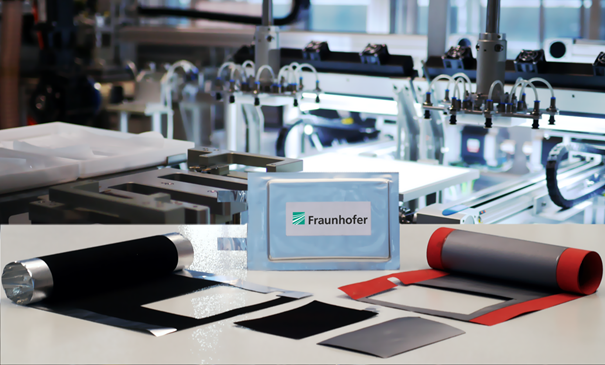Safe and effective energy storage media of the future: lithium-sulphur technology
The Fraunhofer-Gesellschaft in-house LiScell joint project was successfully concluded in May 2017. Lithium-sulphur technology was studied because it might offer an attractive energy-storage solution for future mobility thanks to its low cost of materials and high energy density.
Efficient storage of electrical energy is the bottleneck for all mobile electronic applications. The weight and cost per kWh of battery storage capacity decisively limit the areas of application in which a product can be employed. For example, energy storage represents the majority of total costs for electric vehicles while simultaneously being the cause of the limited 150-km operating range of fully electric automobiles employing lithium-ion technology. Accordingly, the requirement for new storage media with higher energy densities yet low costs is correspondingly large.
The solution to this can be novel lithium-sulphur batteries, for which future energy densities of up to 500 Wh/kg are expected. Simultaneously, this technology replaces the expensive cathode material of Li-ion cells by the cost-efective and non-toxic sulphur with its nearly unlimited availability.
Research has been carried out over the last three years on advanced development of lithium-sulphur battery cells using new cathodes, electrolytes, and anodes under the Fraunhofer LiScell joint project.
Besides their involvement with materials development, the four participating Fraunhofer Institutes – the Institute for Material and Beam Technology IWS (Dresden), Institute for Organic Electronics, Electron Beam and Plasma Technology FEP (Dresden), Institute for Transportation and Infrastructure Systems IVI (Dresden), and Institute for Chemical Technology ICT (Pfinztal) – were also working on scalable fabrication processes for anodes and cathodes in the form of roll-to-roll foils and on the construction of battery modules. The goal is to advance the state of lithium-sulphur technology for electromobility.
Lithium-sulphur distinguishes itself with its very low material cost and high energy density. As a result, it might represent an attractive energy storage solution for future mobility applications. At up to 400 Wh/kg, these cells already achieve up to 40% higher energy densities than the best lithium ion cells today. However, the greatest challenge with Li-S cells is to improve their poor cycling ability: they can only be discharged and re-charged 50 to 100 times. The reason for this is a chemical reaction in which the electrolyte attacks the anode surface, consisting of metallic lithium. The scientists focused on this challenge and developed a cell design based around an anode made of a silicon alloy as a substitute for metallic lithium.
This new anode and cell design was implemented and demonstrated in Li-S and Li-ion prototype cells at the Fraunhofer IWS. New solutions were also found for the fabrication of sulphur cathodes. Dr. Holger Althues, head of the consortium and Department of Chemical Surfaces and Barrier Engineering at the Fraunhofer IWS, explains: “Powdered active materials were processed without solvents by using a dry-film procedure at the Fraunhofer IWS to produce high-performanceelectrodes.”
The advantages of the Si anode technique were determined in safety tests carried out by the Fraunhofer ICT. Li-S cells have a performance edge over conventional energy storage media thanks to their high tolerance to overcharging and thermal stress.
Acquiring precise knowledge about the batteries charging and health state is essential to achieve reliable battery operation. Conventional methods for characterizing the aging process do not work well with this new cell technology, though. “The key for practical application of the technology was using a sophisticated combination of data- and model-based methods to determine the state of charge and state of aging”, added Dr. Ulrich Potthoff, responsible for this development at Fraunhofer IVI.
Finally, suitable economical and efficient fabrication processes needed to be worked out and tested. “Silicon layers with a specialized micro-scale structure were able to be deposited on both sides of thin charge-collector film made of copper using a new vacuum coating technology in a roll-to-roll process”, as Dr. Nicolas Schiller, director of the Flat and Flexible Products Division, summed up the results at the Fraunhofer FEP. “The layers proved themselves to be suitable anode material for Li-S cells as well as for Li-ion cells. They possess considerable potential for increasing the volumetric energy density compared to conventional solutions.”
Conclusion: following three years of energetic research work, large strides were made in lithium-sulphur technology for energy storage. Among other things, the ability to re-charge the batteries was considerably improved and manufacturing costs were reduced by the application of cost-effective roll-to-roll fabrication processes. Another step towards employing this energy storage system for electromobility and wearables has been taken.
 Fraunhofer Battery Alliance
Fraunhofer Battery Alliance